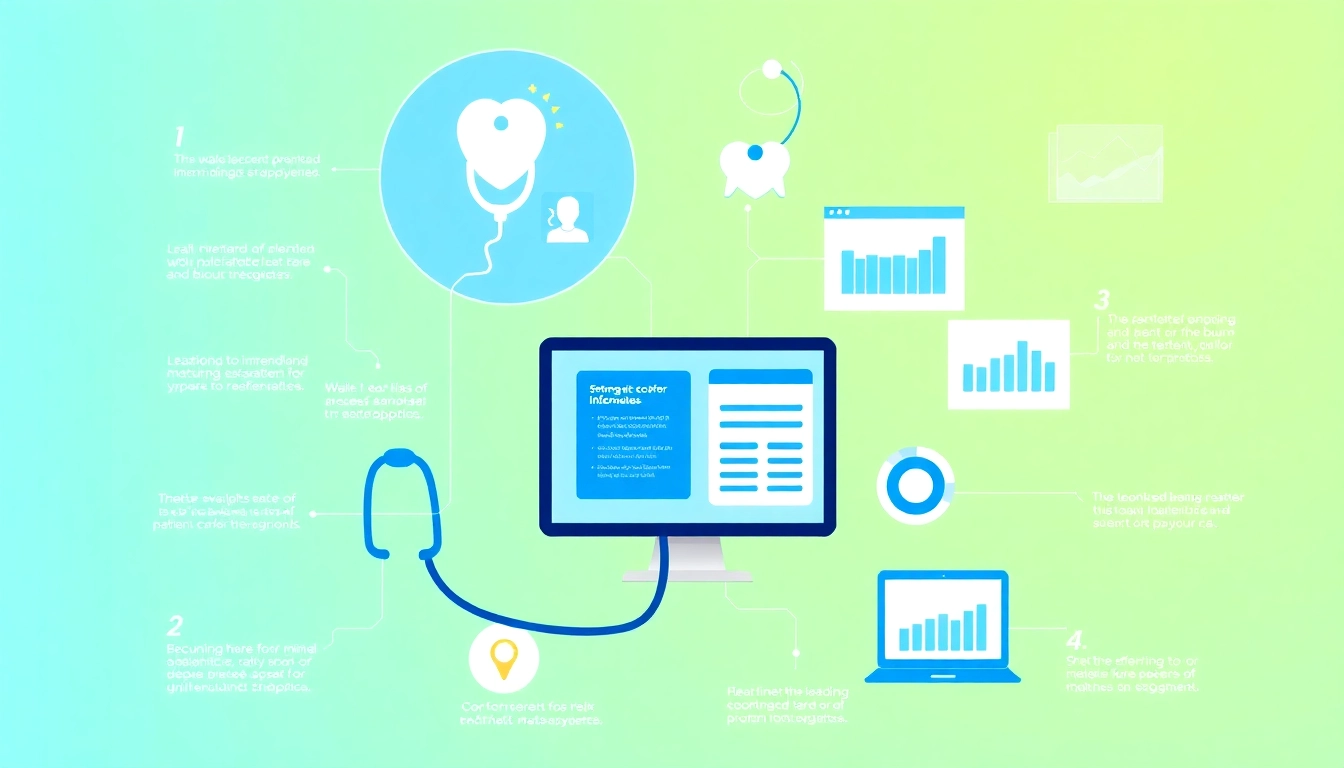Introduction to Health Informatics
In the rapidly evolving field of healthcare, the application of technology is becoming indispensable. One of the paramount disciplines in this area is health informatics, which merges data science with healthcare delivery to enhance patient care. In an era where data-driven decisions are the norm, understanding health informatics is crucial for healthcare professionals. According to the https://www.informaticsview.com, informatics integrates technologies, methodologies, and the study of healthcare phenomena, forming a significant backbone for contemporary medical practices.
What is Health Informatics?
Health Informatics refers to the interdisciplinary study that employs effective information technology to improve healthcare services, enhance patient outcomes, and optimize health systems. This specialty encompasses a broad array of fields, including computer science, information science, and health sciences, with the goal of managing healthcare data and information efficiently.
In essence, health informatics is essential for managing the vast amounts of data generated in healthcare settings. This includes electronic health records, clinical data, and patient-generated health information, enhancing communication and workflow across healthcare providers.
Importance of Health Informatics
The importance of health informatics cannot be overstated. As healthcare systems shift toward digital solutions, the ability to process and analyze health data systematically is crucial. Some key reasons why health informatics is vital include:
- Improved Patient Care: By leveraging data analytics, healthcare providers can make informed decisions, leading to better diagnostics and patient outcomes.
- Enhanced Efficiency: Automated systems reduce redundancy, minimize human error, and enhance workflow efficiencies in healthcare processes.
- Data Accessibility: Health informatics facilitates the seamless exchange of information between various healthcare entities, ensuring that healthcare providers have access to comprehensive patient records.
- Population Health Management: It allows for the analysis of population health data, aiding in the identification of trends and health issues, which can guide public health interventions.
Key Components of Health Informatics
Several core components constitute health informatics, including:
- Data Standards: Frameworks and formats that ensure health data is shared uniformly across systems.
- Information Systems: Tools that capture, store, and analyze health data, including EHRs, CDSS, and other software systems.
- Clinical Workflows: Processes and protocols that define how patient care is delivered and documented.
- Analytics: Techniques used to derive insights from collected health data, enabling informed decision-making.
Applications of Health Informatics
Electronic Health Records (EHR)
EHRs are digital versions of patients’ paper charts and are foundational to health informatics. They provide real-time, patient-centered records and are designed to be accessed by authorized users across various healthcare settings. The application of EHRs includes:
- Comprehensive Data Access: EHRs allow healthcare providers immediate access to patient history, medications, laboratory results, and treatment plans, improving care continuity.
- Data Analytics: The vast amounts of data stored in EHRs can be analyzed to track disease outbreaks, manage chronic illnesses, and improve overall healthcare quality.
Clinical Decision Support Systems (CDSS)
CDSS are sophisticated tools designed to provide healthcare professionals with decision-making support in clinical settings. They utilize patient data and clinical guidelines to aid in diagnosing and treating patients. The significance of CDSS lies in:
- Improved Diagnosis: By cross-referencing patient data with established guidelines, CDSS can enhance diagnostic accuracy.
- Reduction in Errors: They can help in identifying potential errors in prescriptions or treatment plans, thereby improving patient safety.
Telemedicine in Health Informatics
Telemedicine encompasses the use of technology to deliver medical care remotely. Utilizing videoconferencing, mobile apps, and other communication technologies, telemedicine expands access to healthcare services, especially for individuals in underserved areas. Key advantages include:
- Accessibility: Patients can consult health professionals without the need for travel, making healthcare more accessible to rural and remote communities.
- Enhanced Patient Engagement: Telemedicine fosters increased communication between patients and providers, thereby promoting better management of health conditions.
Challenges in Implementing Health Informatics
Data Privacy and Security Concerns
With the increasing digitalization of health information comes the critical issue of data privacy and security. Unauthorized access or breaches can lead to significant risks, not only jeopardizing patient trust but also contravening regulations such as HIPAA in the United States. Organizations must adopt stringent security measures, including encryption, access controls, and regular security audits to protect sensitive information.
Interoperability Issues
Interoperability—the ability of different information systems and software applications to communicate, exchange data, and use the information—that remains a significant challenge. Without standardized protocols, health records may not be easily shared among different systems, leading to fragmented patient information. Implementing widely-accepted standards such as HL7 or FHIR can assist in overcoming these challenges.
Training and Adoption Barriers
Another significant challenge in health informatics is the training and upskilling of healthcare professionals. Resistance to change among staff members can hinder the successful implementation of new systems. Thus, organizations must prioritize comprehensive training programs and ongoing education to facilitate smoother transitions and promote user confidence in utilizing informatics tools.
Best Practices for Health Informatics Implementation
Creating a Strategic Plan
A well-defined strategic plan lays the groundwork for successful health informatics initiatives. This includes assessing the current state of health information management, identifying goals, and establishing measurable objectives. Additionally, an effective strategic plan should incorporate stakeholder input, ensuring that the needs of all parties involved—administrators, healthcare providers, and patients—are considered.
Engaging Stakeholders Effectively
Engaging all relevant stakeholders is critical for the adoption of health informatics systems. This includes involving clinicians, IT staff, patients, and management in the decision-making process. Regular communication, updates on progress, and feedback opportunities create a collaborative environment that promotes buy-in and support for informatics initiatives.
Evaluating Outcomes and Metrics
To assess the effectiveness of implemented health informatics systems, ongoing evaluation of outcomes and metrics is essential. This may involve measuring patient satisfaction, tracking the reduction in errors, or analyzing the efficiency of clinical workflows. Establishing key performance indicators (KPIs) helps measure progress and informs future decisions regarding system enhancements and resource allocation.
Future Trends in Health Informatics
Artificial Intelligence and Machine Learning
Artificial intelligence (AI) and machine learning (ML) are poised to revolutionize health informatics. These technologies can analyze vast datasets to identify patterns, generate predictive models, and streamline operations. For example, AI algorithms can assist in early disease detection and personalized treatment plans by analyzing patient data and genetic information.
Big Data Analytics in Healthcare
The utilization of big data in healthcare amplifies the capability to derive evidence-based insights that can transform practice. By harnessing data from various sources—such as EHRs, wearables, and genomic data—healthcare organizations can perform advanced analytics to improve patient care, predict population health trends, and enhance clinical outcomes.
Patient-Centered Care Innovations
Future advancements in health informatics are expected to prioritize patient-centered care, driving innovations that tailor healthcare solutions to individual needs. This includes telehealth solutions, personalized health plans, and patient engagement tools that empower individuals to take control of their health and wellness.



